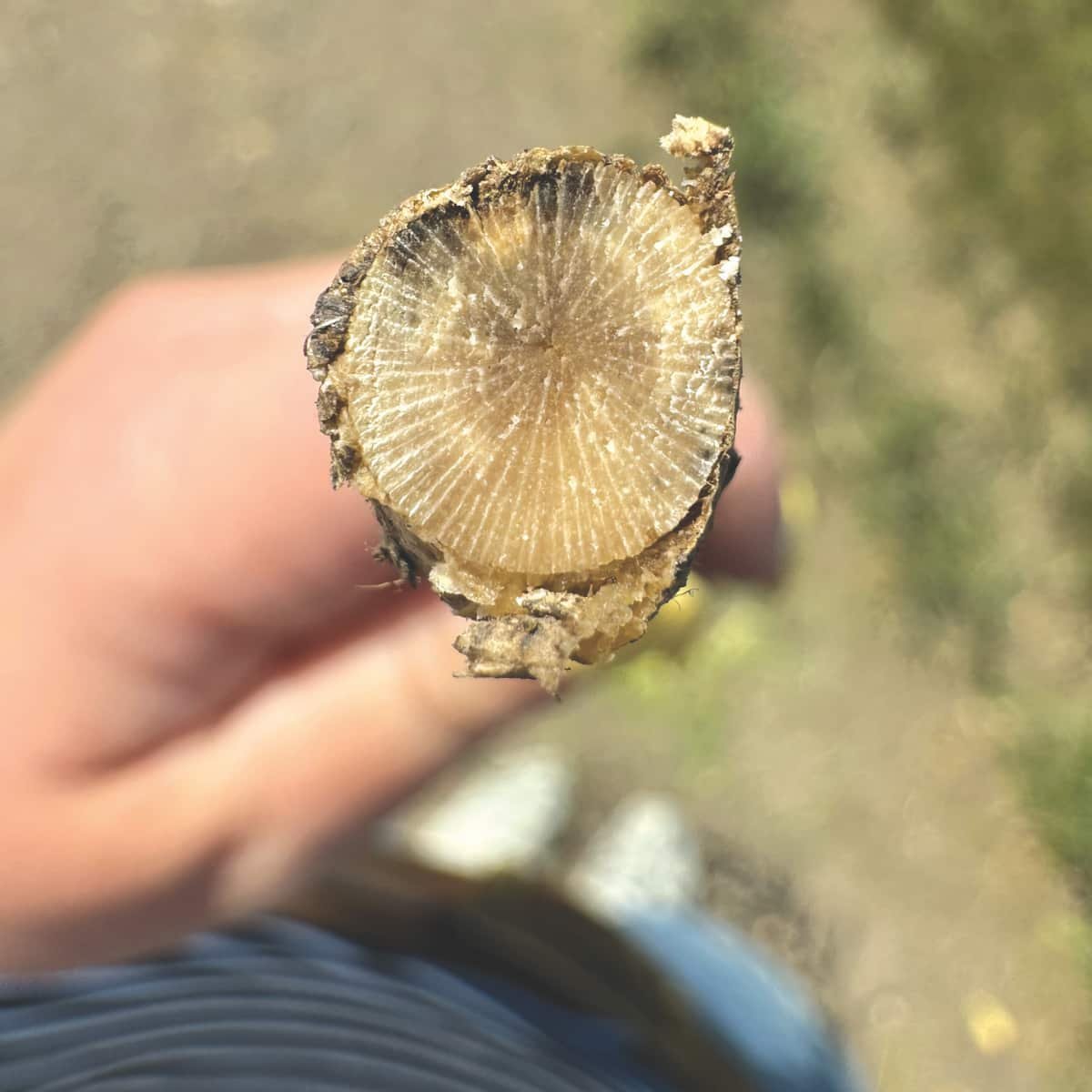Taking action on verticillium stripe
By Breanna Miller
Researchers detected verticillium stripe, caused by the pathogen Verticillium longisporum, in canola in Manitoba in 2014. Since then, the disease has been found across the Prairies, causing yield loss and lodging in some fields.
Disease surveys from the three Prairie provinces indicate the verticillium stripe situation in each province.
Saskatchewan rural municipalities in yellow are confirmed to have verticillium stripe, based on 2023 surveys.
This canola stem cross section (cut near ground level) shows both verticillium stripe infection throughout and a small wedge of darker discolouration that is likely blackleg. For more identification and scouting tips, read ‘How to identify verticillium stripe’ at CanolaWatch.org. Photo credit: Canola Council of Canada
When the crop is full height but still green, canola plants infected with verticillium stripe will often have a two-toned stem – half healthy and green and half discoloured and drying down. This half-stem senescence is where the “stripe” name comes from. Photo credit: Canola Council of Canada
Manitoba 2023
Surveyors participating in the Manitoba Agriculture and Agriculture and Agri-Food Canada Brandon survey assessed 129 canola crops in August 2023. Most of the fields were ripening, not yet swathed or combined, when surveyed.
Disease prevalence is the percentage of fields surveyed that have infection in them. The average prevalence was 29 per cent for verticillium stripe. Incidence is the percentage of plants surveyed within a field that have disease symptoms. Average incidence in infected crops was 11 per cent.
Saskatchewan 2023
In 2023, the Saskatchewan Ministry of Agriculture surveyed 218 fields through the general canola disease survey and an additional 103 fields after harvest. Results confirmed verticillium stripe in 25 fields in 23 rural municipalities (RMs). SaskCanola also expanded its disease testing program last year to include verticillium stripe, which found the disease in an additional 16 RMs, bringing the total to 39. (See the map for RMs with known verticillium stripe.)
Alberta 2023
In Alberta, 356 fields were included in the 2023 disease survey, resulting in verticillium stripe prevalence at 18 per cent and incidence at just under one per cent. The complete plant disease situation from 2023 will be posted in the Canadian Plant Disease Survey once finalized.
What can growers and agronomists do?
Verticillium microsclerotia are soil-borne. Steps to keep soil in place could provide some reduction in spread.
Two- or three-year breaks between canola crops is a disease management best practice. This should help reduce verticillium severity, although verticillium microsclerotia can remain viable for many years.
Scout effectively. If you suspect the disease, submit samples for testing. Watch the video “How to collect canola samples for verticillium stripe testing” at youtube.com/canolacouncil.
Get involved. For more information on verticillium stripe testing and participating in disease surveys, check out the ‘Preparing for 2024: Canola disease recap” blog at CanolaResearch.ca.
What’s next?
In the long term, we hope genetic resistance or tolerance will provide the best solution for control. Canola breeders are actively working to develop this trait.
Research is also underway to help quantify yield loss from verticillium stripe across the Prairies. Four Canola Research Agronomic Program (CARP) projects are investigating the disease.
To learn more about verticillium stripe, check out the verticillium stripe chapter at CanolaEncyclopedia.ca, or the Canola Watch fundamentals article ‘How to identify verticillium stripe’ at CanolaWatch.org.
Breanna Miller is an agronomy specialist with the Canola Council of Canada.



